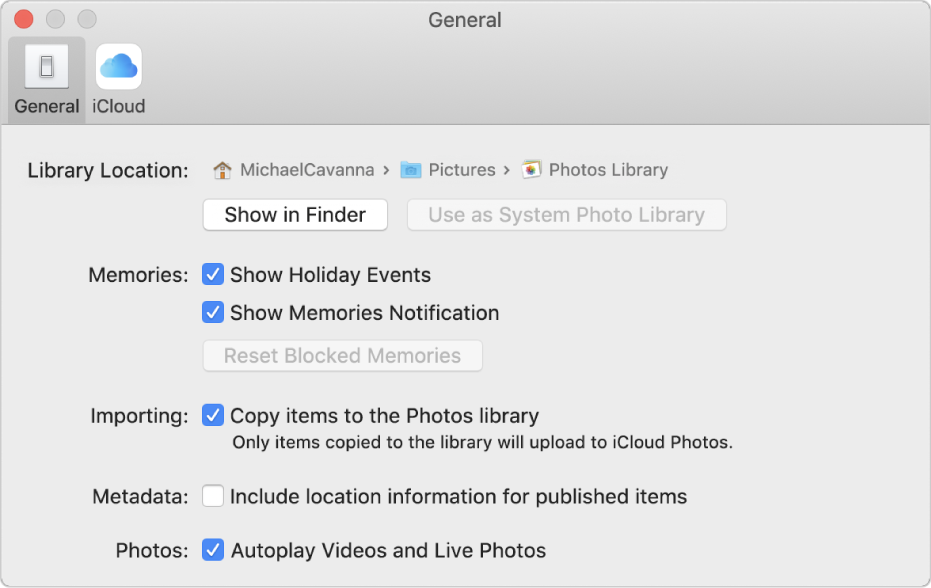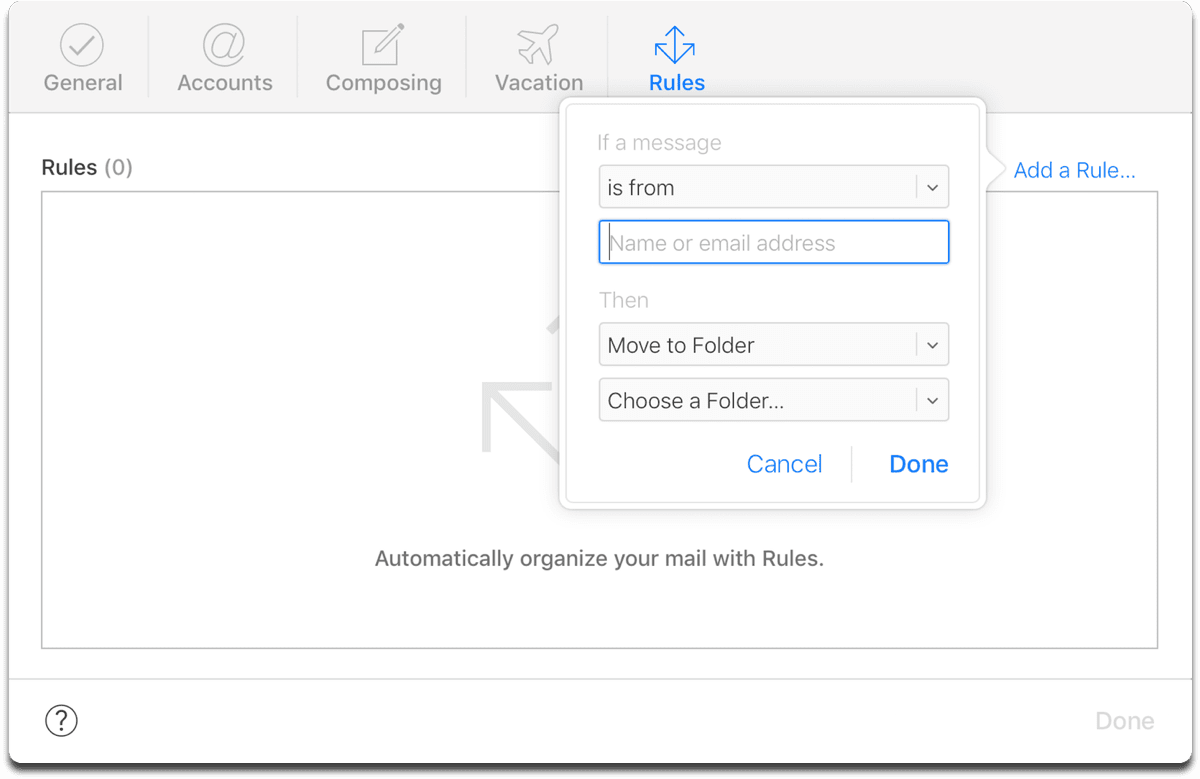- Use the latest version of macOS. Update to the latest version of macOS. Go to Apple menu.
- Create Your Apple ID Create Your Apple ID. More ways to shop: Find an Apple Store or other retailer near you. Or call 1-800-MY-APPLE.
ICloud automatically keeps apps — including Mail, Calendar, Contacts, Reminders, Safari, and some of your favorite apps from the App Store — updated across all your devices. So when you add a new phone number, bookmark a website, or update a slide in a presentation, the change appears everywhere. Troubleshoot email problems in Mail on Mac. Problems sending messages. If you can't send emails. If people don't receive emails you send. Problems receiving messages. If you can't receive emails. If emails aren't displayed or look strange. If junk mail filters aren't working. ICloud Drive. Safely store and access all your files in iCloud Drive. Share any folder or file with friends, family, and colleagues right from File Explorer. Save space on your PC by keeping your files in iCloud Drive only. Choose files and folders to keep locally on your PC to ensure you can access them even when offline iCloud.
Do you need these mail server settings?

You can use the mail server settings in this article to manually set up your email app to send and receive email with an iCloud email account. However, you shouldn't need to do that if you meet iCloud system requirements and can use any of these setup methods:
Microsoft OneDrive keeps your files and photos backed up, protected, synced, and accessible on your Mac and across all your other devices. Easily share documents, photos, and other files with friends, family, and colleagues. Know that your files are safe with.



- Use iCloud Preferences on your Mac in OS X Lion 10.7.4 or later.
- Use iCloud for Windows on your PC in Microsoft Windows with Outlook 2010 through Outlook 2016. Set up two-factor authentication and, if needed, generate an app-specific password* to use for iCloud Mail.
- Use iCloud settings on your iPhone, iPad, or iPod touch with iOS 7 or later.
Mail server settings
Refer to your email app's documentation for information about how to use these settings. iCloud Mail uses the IMAP and SMTP standards supported by most modern email apps. iCloud does not support POP. If you set up an account using iCloud System Preferences or macOS Mail in 10.7.4 or later, you won't see these settings because they're automatically configured.
IMAP information for the incoming mail server
My Cloud Desktop For Mac
- Server name: imap.mail.me.com
- SSL Required: Yes
If you see an error message when using SSL, try using TLS instead. - Port: 993
- Username: This is usually the name part of your iCloud email address (for example, emilyparker, not emilyparker@icloud.com). If your email client can't connect to iCloud using just the name part of your iCloud email address, try using the full address.
- Password: Generate an app-specific password.

SMTP information for the outgoing mail server
/iCloudMail-574377f53df78c6bb02200bf.jpg)
- Server name: smtp.mail.me.com
- SSL Required: Yes
If you see an error message when using SSL, try using TLS or STARTTLS instead. - Port: 587
- SMTP Authentication Required: Yes
- Username: Your full iCloud email address (for example, emilyparker@icloud.com, not emilyparker)
- Password: Use the app-specific password that you generated when you set up the incoming mail server.
Mac In The Cloud Free
* You only need to use an app-specific password if you're manually setting up mail with your iCloud account in Windows, if you use Mac OS X Mail (10.7.4 and earlier), or if you use any other third-party mail client.

You can use the mail server settings in this article to manually set up your email app to send and receive email with an iCloud email account. However, you shouldn't need to do that if you meet iCloud system requirements and can use any of these setup methods:
Microsoft OneDrive keeps your files and photos backed up, protected, synced, and accessible on your Mac and across all your other devices. Easily share documents, photos, and other files with friends, family, and colleagues. Know that your files are safe with. Regular way to recover Trash on Mac directly. When you notice that you lose some valuable data. When you delete an online-only file from your device, you delete it from your OneDrive on all devices and online. You can restore deleted files and folders from your OneDrive recycle bin on the web for up to 30 days. If you delete a locally available file, it also appears in your device recycle bin.
- Use iCloud Preferences on your Mac in OS X Lion 10.7.4 or later.
- Use iCloud for Windows on your PC in Microsoft Windows with Outlook 2010 through Outlook 2016. Set up two-factor authentication and, if needed, generate an app-specific password* to use for iCloud Mail.
- Use iCloud settings on your iPhone, iPad, or iPod touch with iOS 7 or later.
Mail server settings
Refer to your email app's documentation for information about how to use these settings. iCloud Mail uses the IMAP and SMTP standards supported by most modern email apps. iCloud does not support POP. If you set up an account using iCloud System Preferences or macOS Mail in 10.7.4 or later, you won't see these settings because they're automatically configured.
IMAP information for the incoming mail server
My Cloud Desktop For Mac
- Server name: imap.mail.me.com
- SSL Required: Yes
If you see an error message when using SSL, try using TLS instead. - Port: 993
- Username: This is usually the name part of your iCloud email address (for example, emilyparker, not emilyparker@icloud.com). If your email client can't connect to iCloud using just the name part of your iCloud email address, try using the full address.
- Password: Generate an app-specific password.
SMTP information for the outgoing mail server
- Server name: smtp.mail.me.com
- SSL Required: Yes
If you see an error message when using SSL, try using TLS or STARTTLS instead. - Port: 587
- SMTP Authentication Required: Yes
- Username: Your full iCloud email address (for example, emilyparker@icloud.com, not emilyparker)
- Password: Use the app-specific password that you generated when you set up the incoming mail server.
Mac In The Cloud Free
* You only need to use an app-specific password if you're manually setting up mail with your iCloud account in Windows, if you use Mac OS X Mail (10.7.4 and earlier), or if you use any other third-party mail client.
